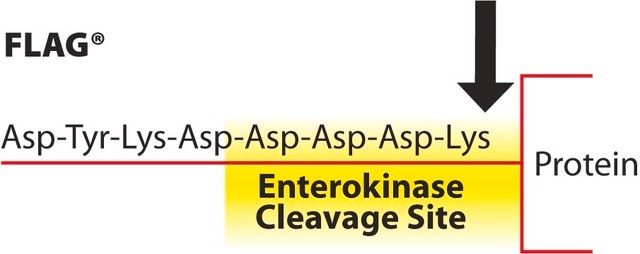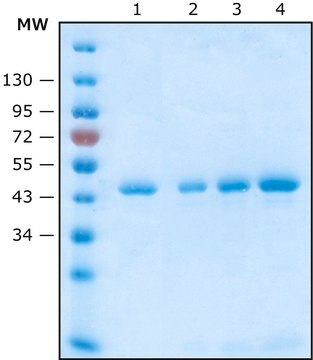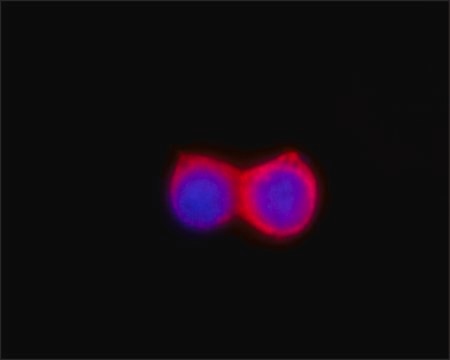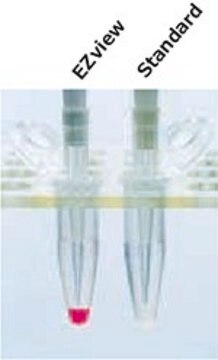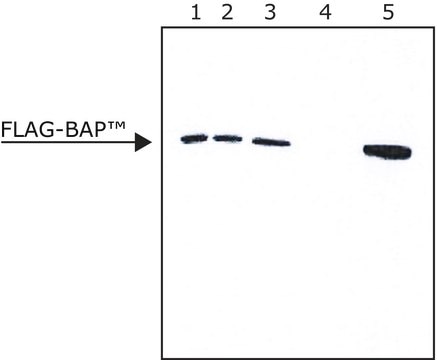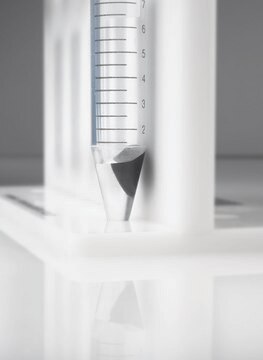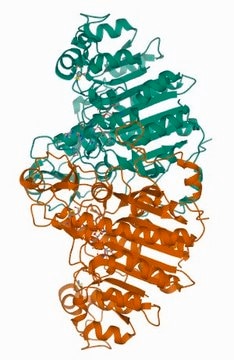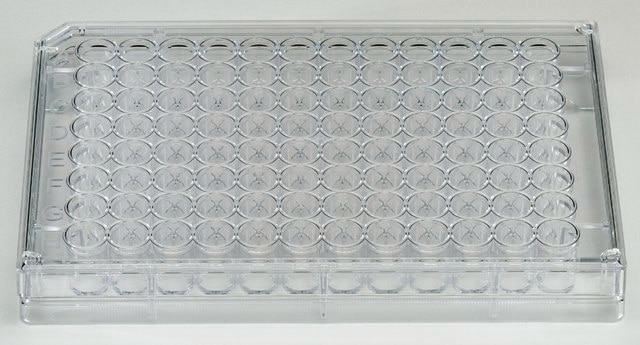M8823
Anti-FLAG® M2 Magnetperlen
affinity isolated antibody
Synonym(e):
Monoklonaler ANTI-FLAG® M2-Antikörper in Maus hergestellte Antikörper, FLAG® Affinitätsharz, FLAG® Harz für hohen Durchsatz, FLAG® Magnetisches Affinitätsharz, Anti-ddddk, Anti-dykddddk
About This Item
Empfohlene Produkte
Konjugat
magnetic beads
Qualitätsniveau
Antikörperform
affinity isolated antibody
Antikörper-Produkttyp
primary antibodies
Klon
M2, monoclonal
Form
suspension
Haltbarkeit
2 yr at -20 °C
chemische Klasse(n) des Analyten
proteins (FLAG® Affinity Gels, FLAG® tag, 3x FLAG® tag, DYKDDDDK tag)
Methode(n)
affinity chromatography: suitable
immunoprecipitation (IP): suitable
Perlengröße
20-75 μm
Matrix
superparamagnetic iron impregnated 4% agarose bead, with an average diameter of 50 μm.
Isotyp
IgG1
Kapazität
≥0.6 mg/mL binding capacity
Versandbedingung
wet ice
Lagertemp.
−20°C
Suchen Sie nach ähnlichen Produkten? Aufrufen Leitfaden zum Produktvergleich
Verwandte Kategorien
Allgemeine Beschreibung
Anwendung
Elution – FLAG® Peptid, Glycin, pH 3,5, 3x FLAG® Peptid
Weitere Produktinformationen finden Sie in unserem FLAG® Literatur-Portal.
Leistungsmerkmale und Vorteile
– Eine sehr schnelle Trennung
– Erheblich schnellere Manipulationen, wie zum Beispiel wiederholtes Auswaschen
– Die Verarbeitung von mehreren Proben in Plattenformaten
Dies resultiert in:
– Einer schnelleren Durchführung von Experimenten
– Besserer Reproduzierbarkeit
– Einer genaueren Quantifizierung der im Fokus befindlichen Proteine
Physikalische Form
Rechtliche Hinweise
Sie haben noch nicht das passende Produkt gefunden?
Probieren Sie unser Produkt-Auswahlhilfe aus.
Ähnliches Produkt
Lagerklassenschlüssel
12 - Non Combustible Liquids
WGK
WGK 1
Flammpunkt (°F)
Not applicable
Flammpunkt (°C)
Not applicable
Persönliche Schutzausrüstung
Eyeshields, Gloves, multi-purpose combination respirator cartridge (US)
Analysenzertifikate (COA)
Suchen Sie nach Analysenzertifikate (COA), indem Sie die Lot-/Chargennummer des Produkts eingeben. Lot- und Chargennummern sind auf dem Produktetikett hinter den Wörtern ‘Lot’ oder ‘Batch’ (Lot oder Charge) zu finden.
Besitzen Sie dieses Produkt bereits?
In der Dokumentenbibliothek finden Sie die Dokumentation zu den Produkten, die Sie kürzlich erworben haben.
Kunden haben sich ebenfalls angesehen
Artikel
The FLAG® Expression System is a proven method to express, purify and detect recombinant fusion proteins. Sigma®, the proven provider of FLAG®, now offers a magnetic bead for immunoprecipitation, protein purification, and the study of protein-protein interactions. The ANTI-FLAG® M2 Magnetic Bead is composed of murine derived, anti-FLAG® M2 monoclonal antibody attached to superparamagnetic iron impregated 4% agarose beads, with an average diameter of 50 µm. The M2 antibody is capable of binding to fusion proteins containing a FLAG peptide sequence at the N-terminus, Met-N-terminus, or C-terminus locations in mammalian, bacterial, and plant extracts.
Comparison of elution techniques for small-scale protein purification of FLAG® tag proteins using anti-FLAG® M2 magnetic beads.
Verwandter Inhalt
Protein purification techniques, reagents, and protocols for purifying recombinant proteins using methods including, ion-exchange, size-exclusion, and protein affinity chromatography.
Protein expression technologies for expressing recombinant proteins in E. coli, insect, yeast, and mammalian expression systems for fundamental research and the support of therapeutics and vaccine production.
Unser Team von Wissenschaftlern verfügt über Erfahrung in allen Forschungsbereichen einschließlich Life Science, Materialwissenschaften, chemischer Synthese, Chromatographie, Analytik und vielen mehr..
Setzen Sie sich mit dem technischen Dienst in Verbindung.


